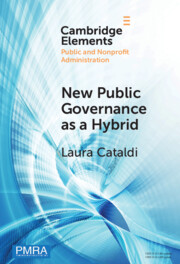Element contents
New Public Governance as a Hybrid
Published online by Cambridge University Press: 23 January 2024
Summary
- Type
- Element
- Information
- Online ISBN: 9781009418904Publisher: Cambridge University PressPrint publication: 29 February 2024



